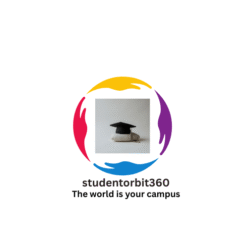The global study abroad landscape is evolving rapidly, especially for students from South Asia, Southeast Asia, and Africa. With growing visa restrictions, post-study work uncertainties, and rising living costs in countries like the US and UK, many students are now setting their sights on alternative destinations.
Let’s explore where these shifts are happening and why:
🇨🇦 Canada: Still a Top Pick Despite Intake Caps
While Canada’s intake caps in early 2024 created short-term uncertainty, the country remains attractive due to its inclusive immigration policies, multicultural society, and extended Post-Graduation Work Permit (PGWP) options.
- Popular among students from India, Bangladesh, Nigeria, and Kenya
- Tech, healthcare, and business programs remain top choices
🇦🇺 Australia: A Major Comeback in 2025
Australia’s post-pandemic recovery has been strong. Relaxed visa pathways, high-quality universities, and regional migration incentives are drawing students from Vietnam, Indonesia, Sri Lanka, and South Africa.
- Up to 4 years of post-study work rights in regional areas
- Big increase in applications from Southeast Asia and Africa
🇩🇪 Germany: Quality Education with Low Cost
Germany continues to attract South Asian and African students with tuition-free education at public universities, especially in engineering, IT, and management.
- Indian, Ghanaian, and Pakistani students top applicant lists
- Work seeker visa post-graduation helps with job transition
🇫🇷 France: A Rising Destination for Management & Design
France has expanded English-taught programs, made visa rules friendlier, and actively targets students from Francophone Africa, India, and Bangladesh. The Bienvenue en France initiative has been a success.
🇸🇪 Sweden: Gaining Attention for Sustainability and Tech
Sweden’s innovation ecosystem is making it popular for students from Kenya, India, and the Philippines. Scholarships, high-quality teaching, and a safe environment are big draws.
🇮🇪 Ireland: Especially Popular for IT & Life Sciences
Ireland is seeing record numbers of applications from South Asia and Africa due to its fast-growing tech sector and English-speaking environment. Strong post-study work rights and job availability help too.
⚖️ Why the Shift?
- US visa delays & OPT uncertainty
- UK’s restriction on dependent visas
- Affordability & living costs in traditional destinations
- More scholarships & English-taught programs in Europe
- Clearer PR pathways in Canada, Australia, and Ireland
🌍 Conclusion
For 2025, South Asian, Southeast Asian, and African students are taking a more diversified and strategic approach to studying abroad. They are choosing destinations that offer long-term value — not just top university rankings but also affordable education, safer environments, and job-ready pathways.



